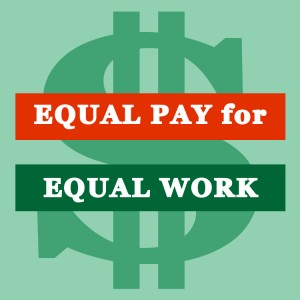Pay Equity Gap Persists in CT, Nationwide
/In Connecticut, median annual pay for a woman who holds a full-time, year-round job is $50,802 while median annual pay for a man who holds a full-time, year-round job is $61,666. This means that women in Connecticut are paid 82 cents for every dollar paid to men, amounting to an annual wage gap of $10,864. Connecticut’s gap ranks as the 37th highest among the states.
That’s according to the National Partnership for Women & Families, which released state-b-state pay gap data for Equal Pay Day on Tuesday that reveals the size of the gender wage gap and its detrimental effects on women’s spending power in all 50 states.
The gap varies by state, but the largest cents-on-the-dollar differences are in Wyoming (36 cents), Louisiana, West Virginia, Utah and North Dakota. The smallest cents-on-the-dollar differences are in New York (11 cents) and Delaware.
The data for Connecticut also indicate that the wage gap is even larger for women of color. Among Connecticut women who hold full-time, year-round jobs, Black women are paid 58 cents, Latinas are paid 47 cents and Asian women are paid 80 cents for every dollar paid to white, non-Hispanic men.
On average, Connecticut women who are employed full time lose a combined total of nearly $15 billion every year due to the wage gap, the National Partnership reported. “These lost wages mean women and their families have less money to support themselves, save and invest for the future, and spend on goods and services. Families, businesses and the economy suffer as a result,” the organization pointed out.
 According to data highlighted by the National Partnership, in Connecticut more than 170,000 family households are headed by women. About 24 percent of those families, or 40,431 family households, have incomes that fall below the poverty level. Eliminating the wage gap, they suggest, would provide much-needed income to women whose wages sustain their households.
According to data highlighted by the National Partnership, in Connecticut more than 170,000 family households are headed by women. About 24 percent of those families, or 40,431 family households, have incomes that fall below the poverty level. Eliminating the wage gap, they suggest, would provide much-needed income to women whose wages sustain their households.
If the annual wage gap were eliminated, on average, a working woman in Connecticut would have enough money for:
- More than 11 additional months of child care;
- Nearly one additional year of tuition and fees for a four-year public university, or the full cost of tuition and fees at a two-year community college;
- Approximately 82 more weeks of food for her family (1.6 years’ worth);
- More than five additional months of mortgage and utilities payments; or
- Nearly 10 more months of rent.
“Equal Pay Day is a painful reminder that women in this country have had to work more than three months into this year just to catch up with what men were paid last year,” said Debra L. Ness, president of the National Partnership. “This analysis shows just how damaging that lost income can be for women and their families, as well as the economy and the businesses that depend on women’s purchasing power. Entire communities, states and our country suffer because lawmakers have not done nearly enough to end wage discrimination or advance the fair and family friendly workplace policies that would help erase the wage gap.”
In the nationwide data, the civilian industries that employ the most full-time employees – health care and social assistance, manufacturing, retail trade and educational services – pay women less than men. In the health care and social assistance industry, women are paid just 72 cents for every dollar paid to men. In manufacturing, just 76 cents. In retail trade, 79 cents. And in educational services, 88 cents. Across all industries, women are paid lower salaries than men.
The wage gap data reflects statistical analysis showing that 62 percent of the wage gap can be attributed to occupational and industry differences; differences in experience and education; and factors such as race, region and unionization. That leaves 38 percent of the gap unaccounted for, according to the analysis, leading researchers to conclude that factors such as discrimination and unconscious bias continue to affect women’s wages
The National Partnership for Women & Families is a non-profit, non-partisan advocacy group dedicated to promoting fairness in the workplace, access to quality health care and policies that help women and men meet the dual demands of work and family. Equal Pay Day marks how far into the new year women must work in order to catch up with what men were paid in the year before.





























